Anhedonia Test Science: Dopamine, Brain Pathways & Pleasure Loss
Feeling a persistent void, like life's vibrant colors have faded to gray? You're not alone. Many people experience anhedonia, the profound loss of interest or pleasure in activities they once enjoyed. While the feeling is deeply personal, its roots often lie deep within the brain's complex chemistry. Understanding this science isn't just academic; it's an empowering first step toward reclaiming your capacity for joy. This article demystifies the neurobiology of anhedonia, exploring the roles of dopamine and brain pathways, and how a scientific anhedonia test can offer clarity.
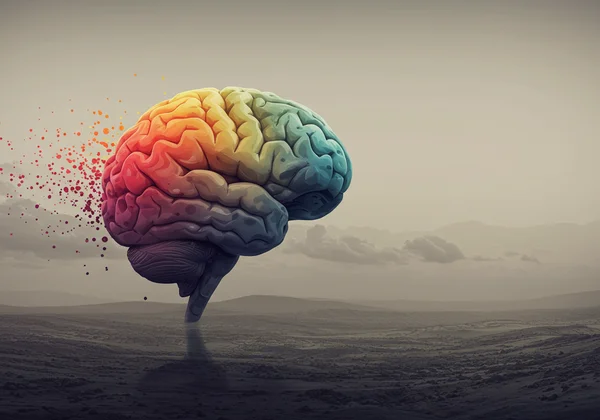
Have you ever wondered what’s happening inside your brain when joy feels out of reach? This journey into the science of pleasure can provide valuable answers and illuminate a path forward. If you suspect you might be experiencing these symptoms, gaining initial insight is crucial, and you can start your assessment today with a confidential screening tool.
The Brain's Reward System: Your Pleasure Blueprint
At the heart of our ability to experience pleasure is the brain's reward system. Think of it as a complex electrical and chemical circuit designed to motivate us to seek out experiences essential for survival and well-being, such as eating, socializing, and achieving goals. When this system functions correctly, it releases chemicals that make us feel good, reinforcing those beneficial behaviors.
However, when this intricate blueprint is disrupted, our ability to feel pleasure can diminish significantly. Understanding its core components is the first step to understanding what might be going wrong in anhedonia. This system isn't just about feeling good; it's about anticipating, wanting, and learning from rewarding experiences.
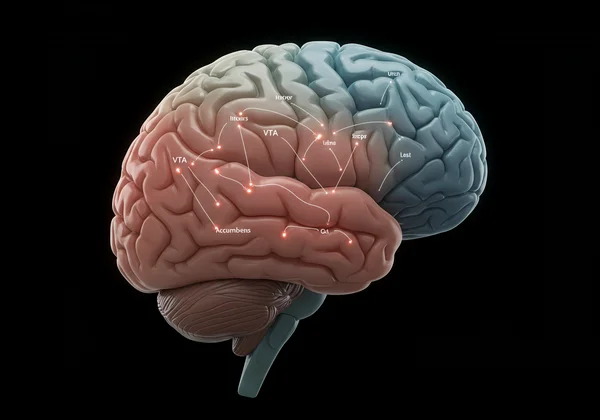
Key Components of the Hedonic Circuitry
The brain's pleasure network, or hedonic circuitry, involves several interconnected regions. Key players include the ventral tegmental area (VTA), the nucleus accumbens, and the prefrontal cortex. The VTA produces dopamine, a critical chemical messenger, and sends it to the nucleus accumbens, which processes reward and motivation. The prefrontal cortex then helps regulate our emotional responses and decision-making based on these signals. When communication within this circuit falters, the experience of pleasure can become muted or absent.
Understanding Neurotransmitters: The Brain's Chemical Messengers
Neurotransmitters are the chemical messengers that allow neurons (brain cells) to communicate. They carry signals across the tiny gaps between cells, influencing everything from our mood and sleep to our concentration and motivation. While many neurotransmitters are involved in our emotional landscape, one stands out for its central role in the reward system: dopamine. An imbalance in these messengers is one of the primary causes of anhedonia.
Dopamine and Anhedonia: The "Motivation" Molecule's Role
Dopamine is often mistakenly called the "pleasure molecule." It's more accurate to describe it as the "motivation molecule." Its primary role isn't just in the enjoyment of a reward but in the anticipation and drive to seek it out. It's the chemical that pushes you to apply for a job, ask someone on a date, or start a new hobby because your brain anticipates a positive outcome.
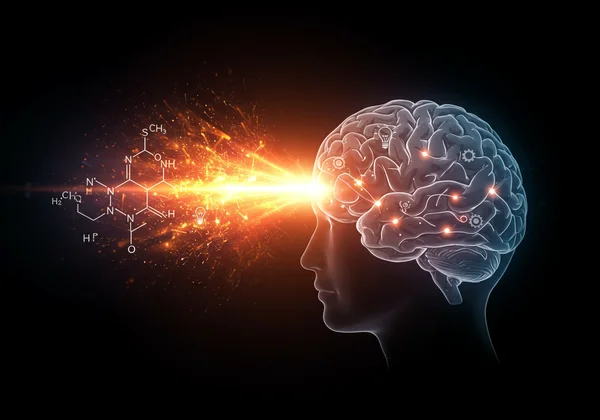
In anhedonia, the dopamine system is often dysregulated. The problem may not be a simple lack of dopamine but rather a breakdown in how the brain produces, releases, or responds to it. This can lead to a state where nothing seems worth the effort because the brain's "wanting" mechanism is offline. If this sounds familiar, a free anhedonia test can help you evaluate your symptoms.
Dopamine Pathways Explained: From Anticipation to Enjoyment
The most critical dopamine pathway related to reward is the mesolimbic pathway, which connects the VTA to the nucleus accumbens. When you anticipate something pleasurable—like seeing a notification from a friend or smelling your favorite food—this pathway lights up. It floods your brain with dopamine, creating a feeling of motivation and desire. A disruption anywhere along this pathway can severely impact your ability to look forward to and engage with life.
When Dopamine Dysfunctions: A Potential Cause of Anhedonia
Dopamine dysfunction can manifest in several ways. The brain might produce less dopamine, have fewer dopamine receptors to receive the signals, or struggle with reuptake, where the chemical is cleared away too quickly. This results in a weakened signal, making it difficult for the brain to register rewards. The outcome is a profound lack of motivation and a dulled sense of pleasure, which are the hallmarks of anhedonia. Understanding where you stand is the first step, and a reliable anhedonia screening tool can provide that initial clarity.
Brain Pathway Changes: The Neurobiology of Pleasure Loss
The idea of anhedonia and brain changes can sound alarming, but it's important to understand this in the context of neuroplasticity—the brain's ability to change and adapt. Anhedonia isn't typically caused by permanent "damage" but rather by functional and structural alterations that can often be reversed. Chronic stress, inflammation, and underlying conditions like depression can physically change the brain's reward pathways over time.
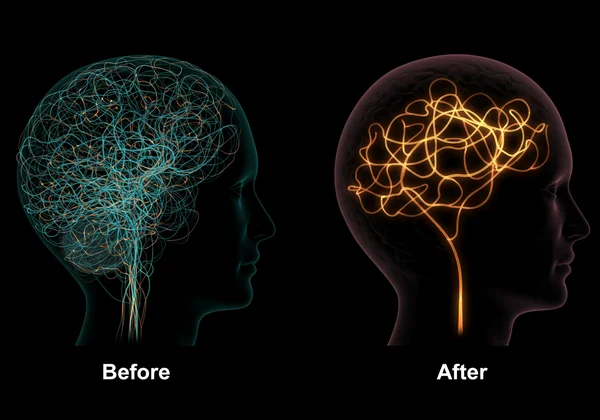
These changes can make it harder for signals of pleasure and motivation to travel effectively. The good news is that just as these pathways can be weakened, they can also be strengthened through targeted interventions and lifestyle changes. Taking an online confidential test can be an insightful way to begin this process of understanding and recovery.
Structural & Functional Alterations in Anhedonic Brains
Research using brain imaging has shown that individuals with anhedonia may have reduced volume in key areas of the reward circuit, such as the prefrontal cortex and nucleus accumbens. Functionally, there may be "hypoactivation," meaning these regions don't light up as strongly in response to potentially rewarding stimuli. These are not signs of a broken brain but rather indicators that the circuitry has become less efficient and needs support to get back online.
How Stress, Trauma, and Depression Impact Brain Chemistry
Prolonged exposure to stress, trauma, or depression is a major factor in developing anhedonia. Chronic stress floods the body with cortisol, a hormone that can be toxic to brain cells in high doses, particularly within the reward system. It can disrupt dopamine production and signaling, effectively "rewiring" the brain to be less sensitive to pleasure and more attuned to threat. This is why anhedonia is a common symptom of depression, PTSD, and other stress-related disorders. A good first step is to assess your symptoms with a tool designed for this purpose.
Beyond Dopamine: Other Factors Contributing to Anhedonia's Complexity
While dopamine is a major player, it's not the whole story. Anhedonia is a complex condition influenced by a wide range of biological and environmental factors. Other neurotransmitter systems, including serotonin (related to mood and well-being) and the brain's natural opioid system (related to the "liking" aspect of pleasure), are also involved. A holistic view is necessary to fully grasp why joy can feel so distant.
The Interplay of Genetics, Environment, and Life Experiences
Your genetic predispositions can make you more vulnerable to developing anhedonia, but they are not destiny. Environmental factors, such as early life experiences, chronic illness, and substance use, can significantly impact brain chemistry and function. It's the complex interplay between your biology and your life story that ultimately shapes your emotional landscape.
Why Anhedonia Manifests Differently: Social vs. Physical
Anhedonia can take different forms. Social anhedonia is a lack of pleasure from interpersonal situations, like talking with friends or being in a group. Physical anhedonia is an inability to enjoy sensory experiences, such as eating, listening to music, or physical touch. Understanding which type you're experiencing can provide clues about the underlying disruptions and help guide potential recovery strategies. A comprehensive online anhedonia test can help you identify which aspects of your life are most affected.
Empowering Understanding: Your First Step Towards Rediscovery
Understanding the science behind anhedonia is profoundly empowering. It transforms the experience from a personal failing into a recognizable condition with biological roots. Knowing that changes in dopamine, brain pathways, and neurotransmitter function are at play can reduce self-blame and open the door to seeking effective solutions.
This knowledge is your first tool for change. The next step is to gain personal insight into your own experience. By taking a science-based, confidential, and free anhedonia test, you can get a clearer picture of your symptoms. This isn't a diagnosis, but it is a vital piece of information you can use for self-reflection or to start a meaningful conversation with a healthcare professional. Take the test now to begin your journey toward rediscovering joy.
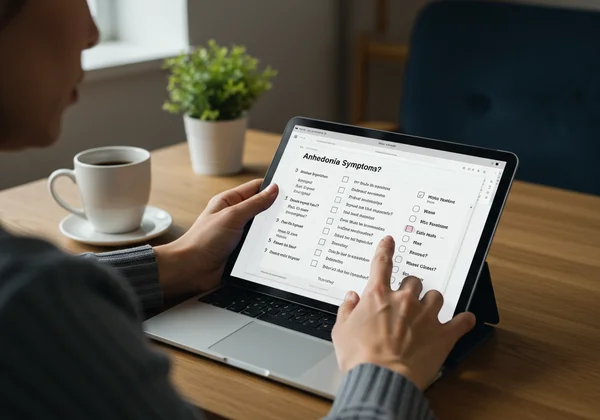
Frequently Asked Questions About Anhedonia's Scientific Basis
How do you test for anhedonia scientifically?
Scientifically, anhedonia is often assessed using clinically validated questionnaires, like the Snaith-Hamilton Pleasure Scale (SHAPS). These scales present scenarios to measure a person's ability to experience pleasure from various activities. An online tool like the one at our confidential platform is based on these principles, providing a reliable and accessible first step in screening for symptoms.
What is the root cause of anhedonia from a neurobiological perspective?
From a neurobiological standpoint, the root cause is typically dysfunction within the brain's reward system. This most often involves disrupted dopamine signaling in the mesolimbic pathway, but can also include imbalances in other neurotransmitters like serotonin and opioids, as well as structural changes in brain regions responsible for processing pleasure and motivation.
Does anhedonia ever go away naturally, or with intervention?
Yes, anhedonia can absolutely improve and often resolve completely. Thanks to neuroplasticity, the brain can form new connections and strengthen weakened pathways. This can happen through targeted therapies (like Cognitive Behavioral Therapy), lifestyle changes (exercise, diet, mindfulness), and, in some cases, medication. The first step is acknowledging the issue, which you can do with a quick evaluation.
Is anhedonia a sign of permanent brain damage?
No, anhedonia is very rarely a sign of permanent brain damage. It is typically a reflection of functional and sometimes structural changes in the brain that are often reversible. Think of it as a circuit that has become inefficient rather than one that is broken. With the right support and strategies, this circuitry can be restored.
What specific deficiency in the brain might cause anhedonia?
While there isn't one single "deficiency," the most commonly implicated issue is a disruption in dopamine signaling. This isn't necessarily a lack of dopamine itself, but could be a problem with its receptors, its release, or its interaction with other brain chemicals. To better understand your symptoms, an initial assessment can provide valuable insights.